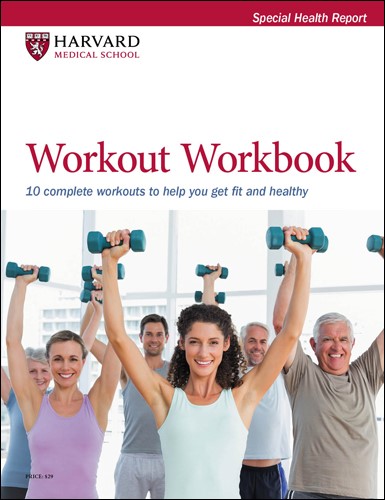What's the minimum amount of exercise I need each week?
Ask the doctor

Q. You're always writing that regular physical activity improves our health. I believe you. But I don't particularly like to exercise. So what's the minimum I need to do to get a benefit?
A. You're not alone in disliking exercise: only 20% of middle-aged and older adults spend even 15 minutes per week in vigorous physical activity. By "vigorous physical activity," I mean activity in which it is hard to talk or sing when you do it, like jogging or exercising on a treadmill.
What's the minimum you really should do? I have some good news. A recent study conducted by scientists around the world, including colleagues here at Harvard, concludes that you don't need that much physical activity each week to gain substantial health benefits.
The study enrolled nearly 72,000 people (most between 50 and 80 years old). All of them were free of diagnosed heart disease or cancer at the start of the study. A strength of the study was that the amount of vigorous physical activity people did was tracked by a device that measured their actual level of activity. (Many past studies just relied on participants to report their physical activity, which can be inaccurate.) The study participants' health was followed over the next five years.
Even the people who did only 15 minutes per week of vigorous physical activity had a 17% lower risk of death from any cause and death from cancer compared with people who were inactive. With about 50 minutes per week, death from any cause was reduced by 36%. The reduction in risk of death from all causes, and death from cancer, was greatest in the first 40 minutes of vigorous physical activity per week. In contrast, death from heart disease continued to decline substantially with each additional minute beyond 40 minutes.
For me, there are several important messages from this study. If vigorous physical activity doesn't immediately appeal to you, moderate physical activity like brisk walking—for at least 150 minutes per week, and ideally 300 minutes per week—also has proven health benefits. But if you're up for at least trying some vigorous physical activity, aim for 40 minutes per week—unless you're at increased risk for heart disease, in which case you should strive for more. Your activity does not have to be done all at once. It can be done in short bursts that add up over the week to your goal. Some of these short bursts can be things you are doing anyway, like climbing stairs.
And if you're someone like me who enjoys physical activity because you feel good during and after that activity, be as active as you can be: you get additional health benefits with each additional minute. It's the best return on investment you'll ever get.
Image: © pixelfit/Getty Images
About the Author

Anthony L. Komaroff, MD, Editor in Chief, Harvard Health Letter; Editorial Advisory Board Member, Harvard Health Publishing
Disclaimer:
As a service to our readers, Harvard Health Publishing provides access to our library of archived content. Please note the date of last review or update on all articles.
No content on this site, regardless of date, should ever be used as a substitute for direct medical advice from your doctor or other qualified clinician.
















